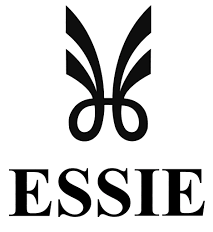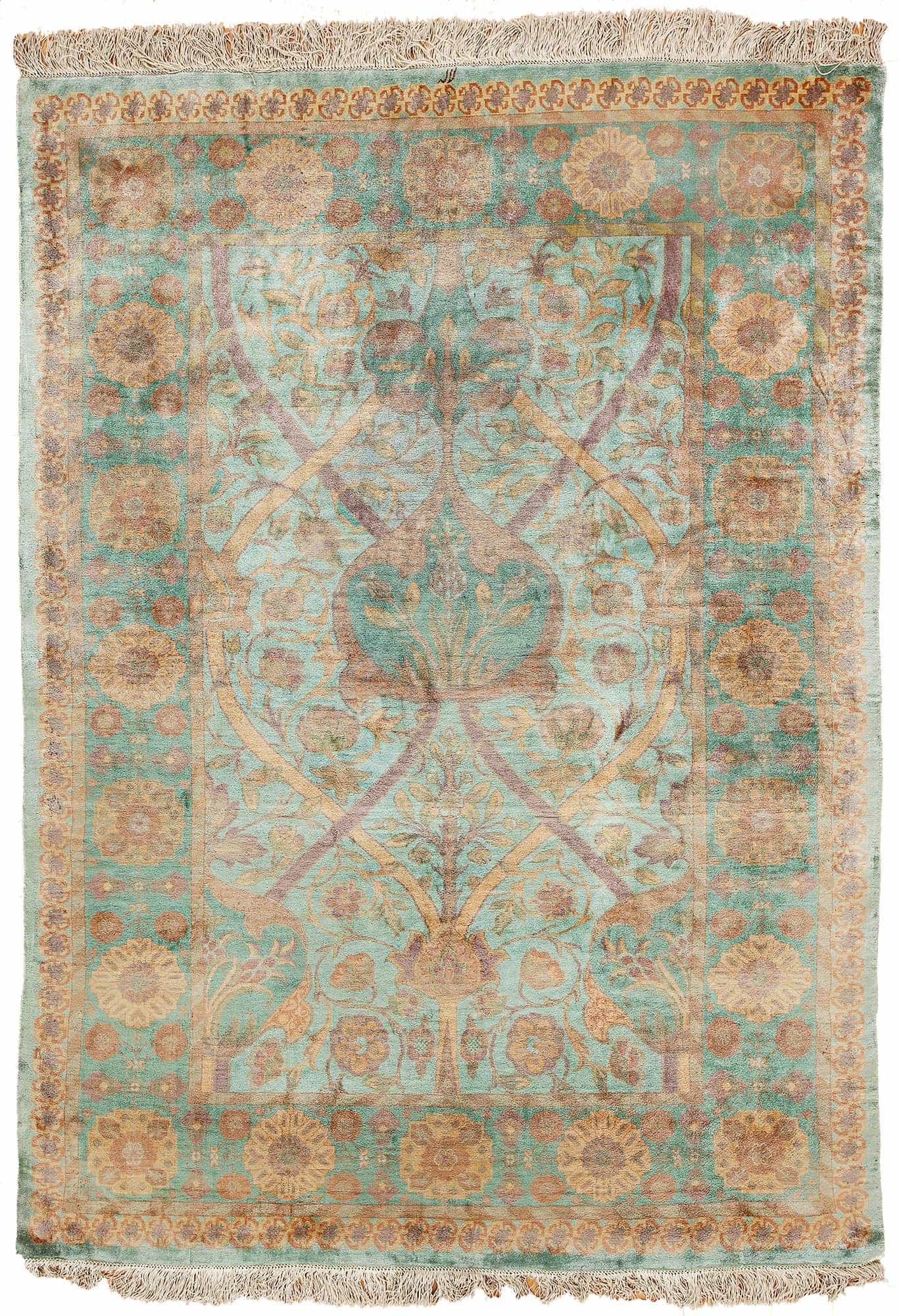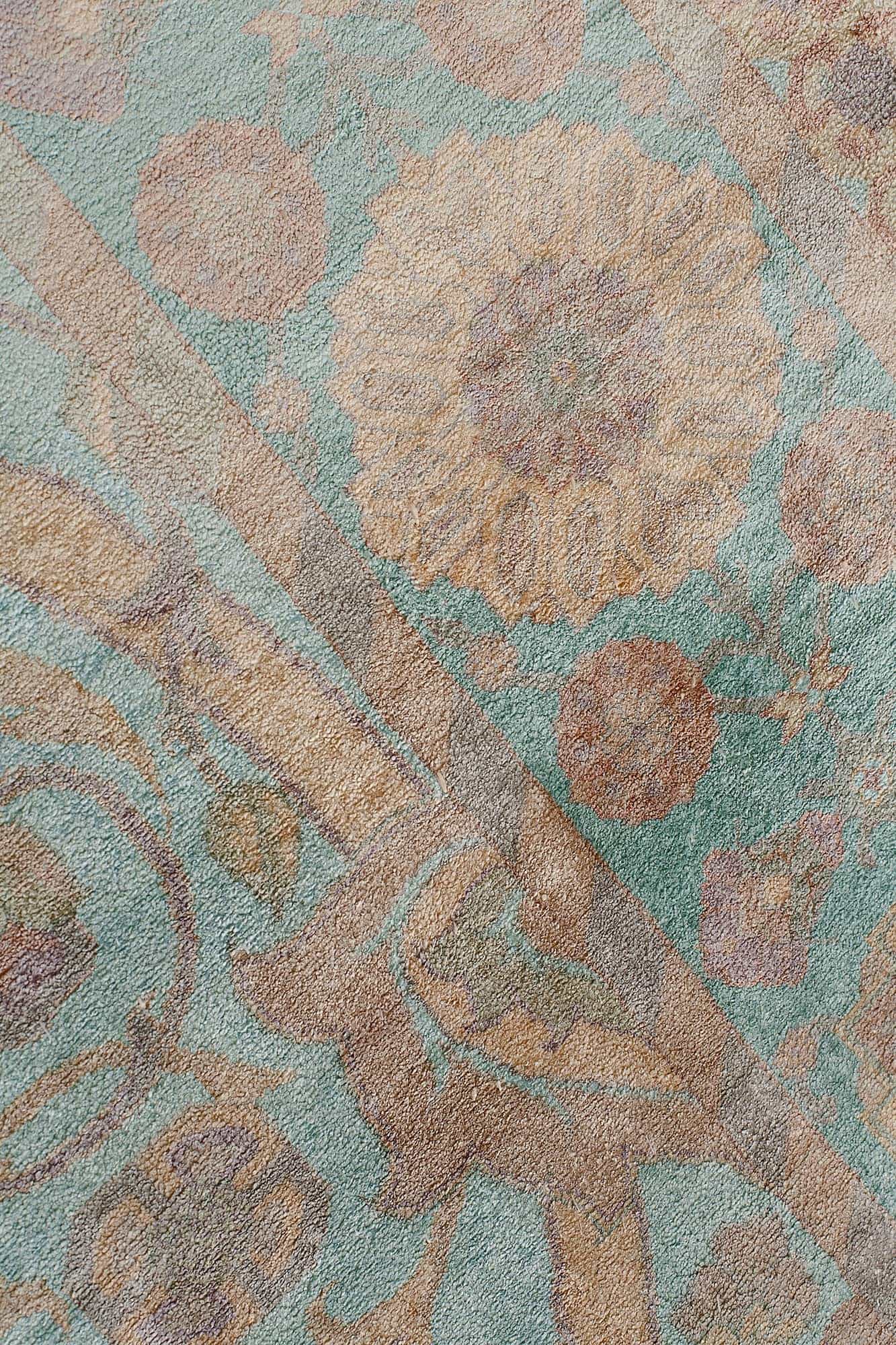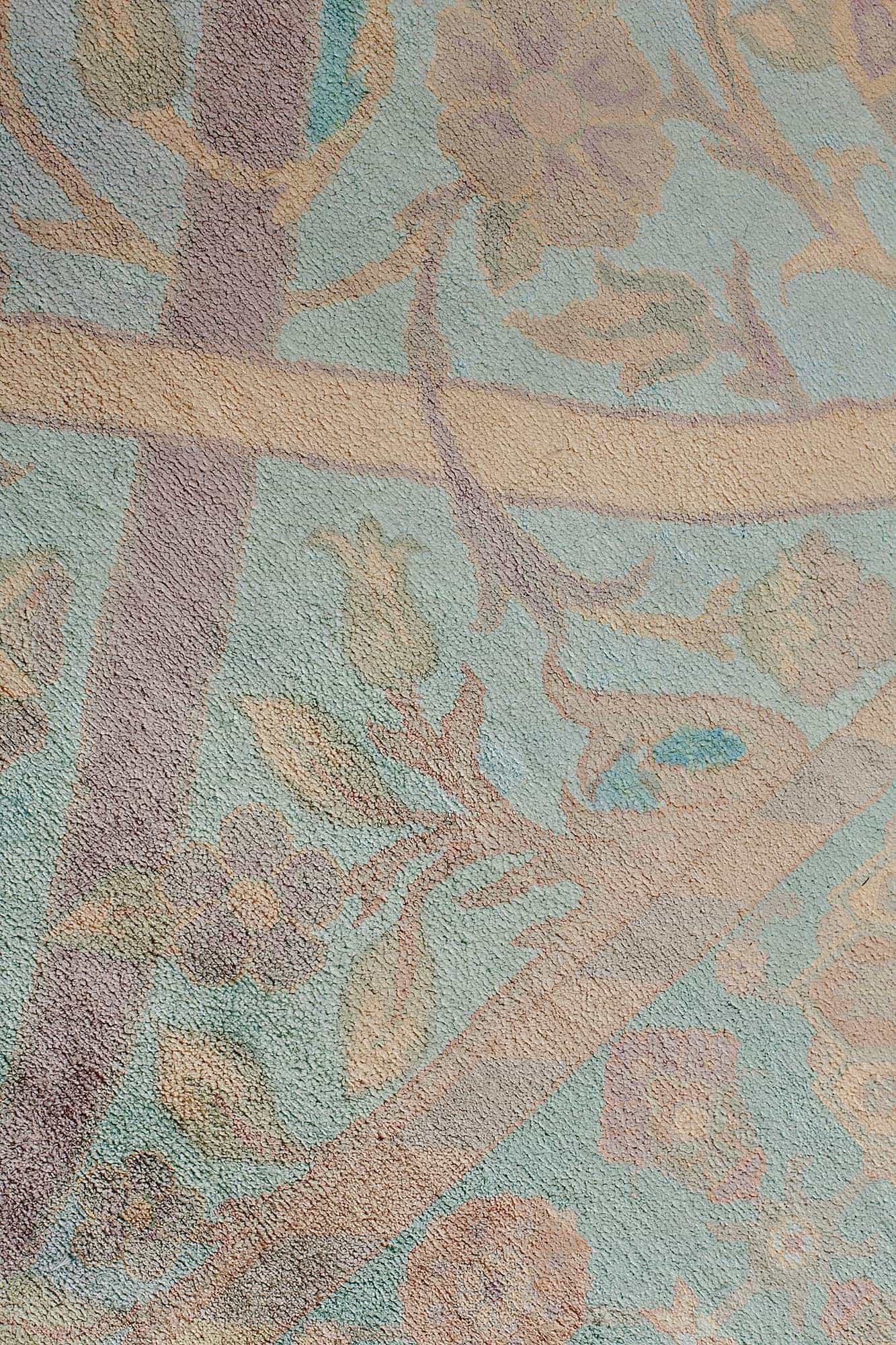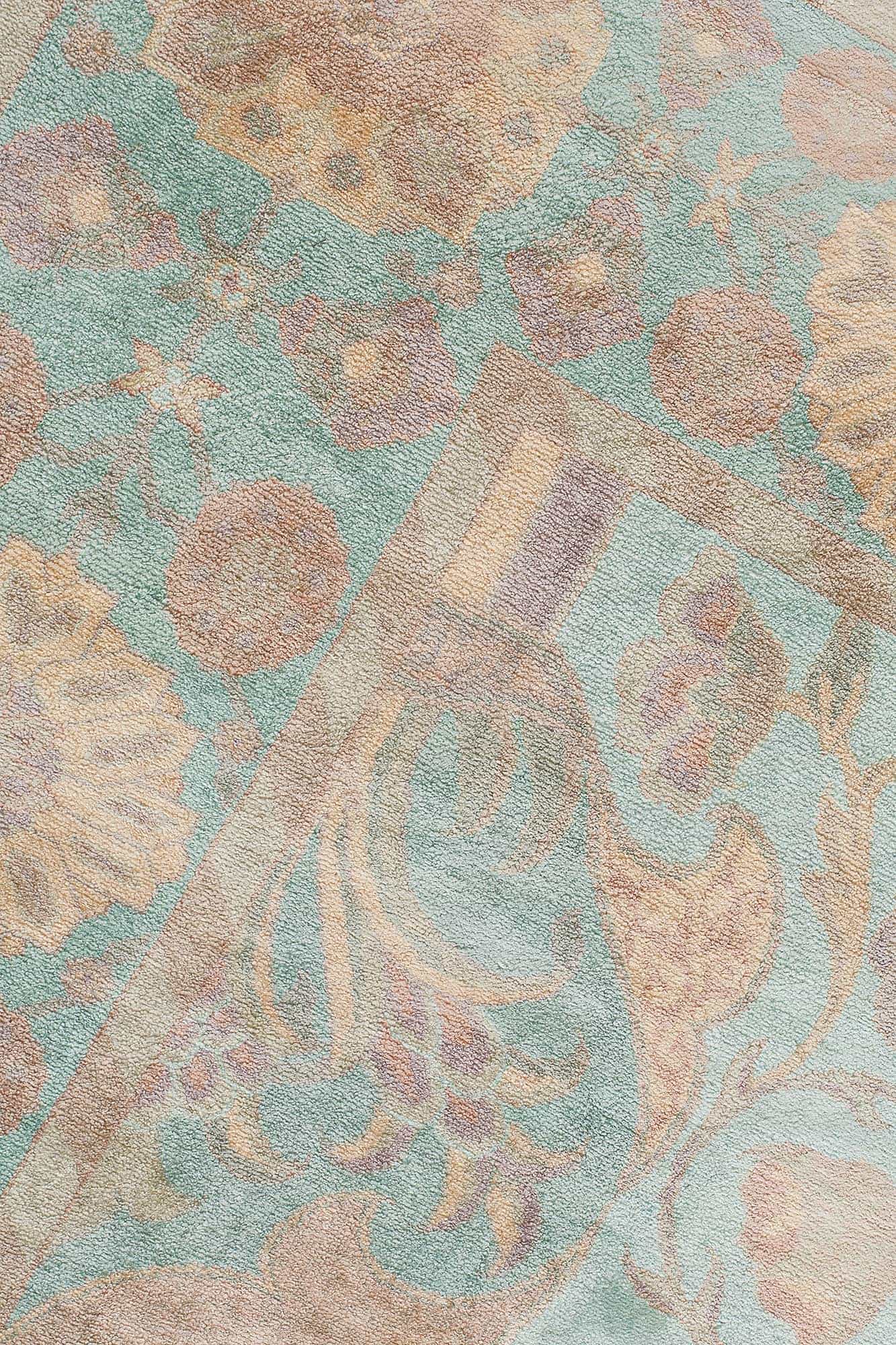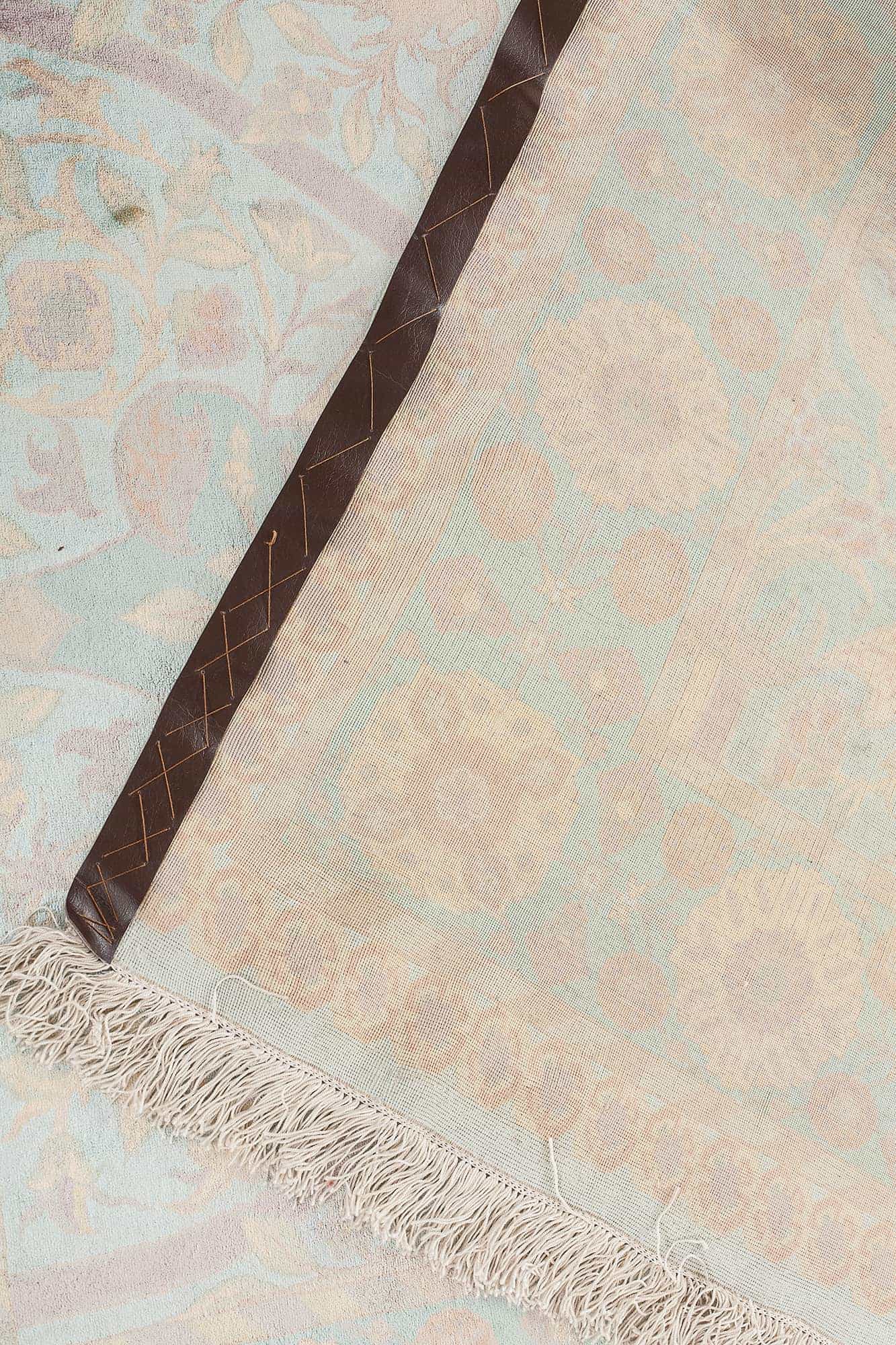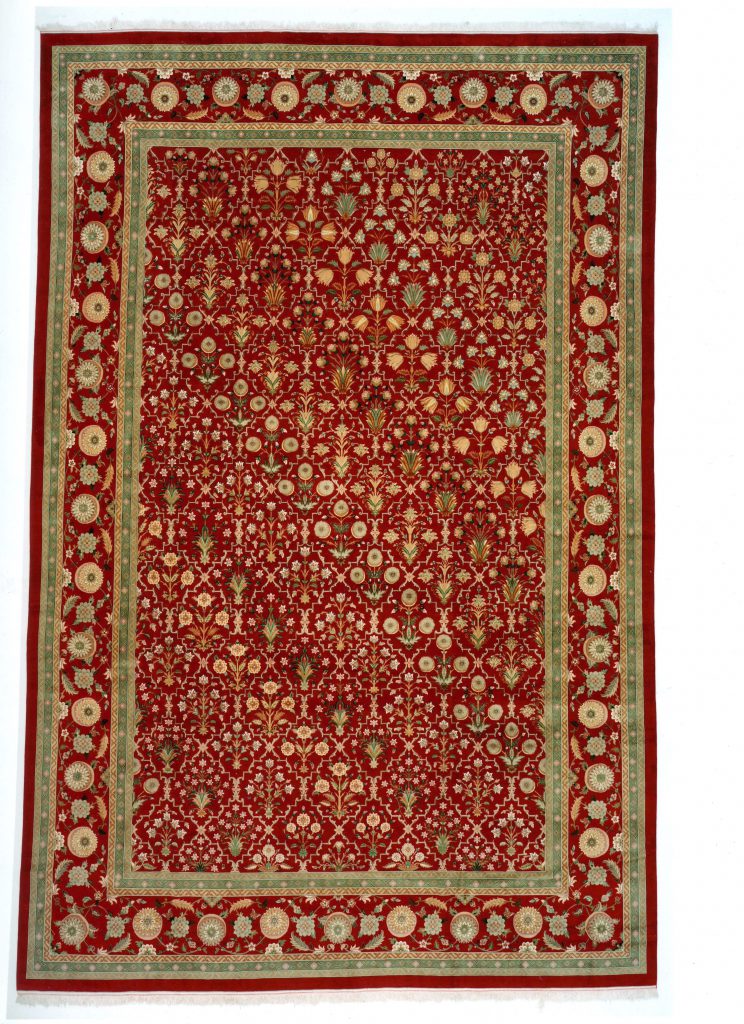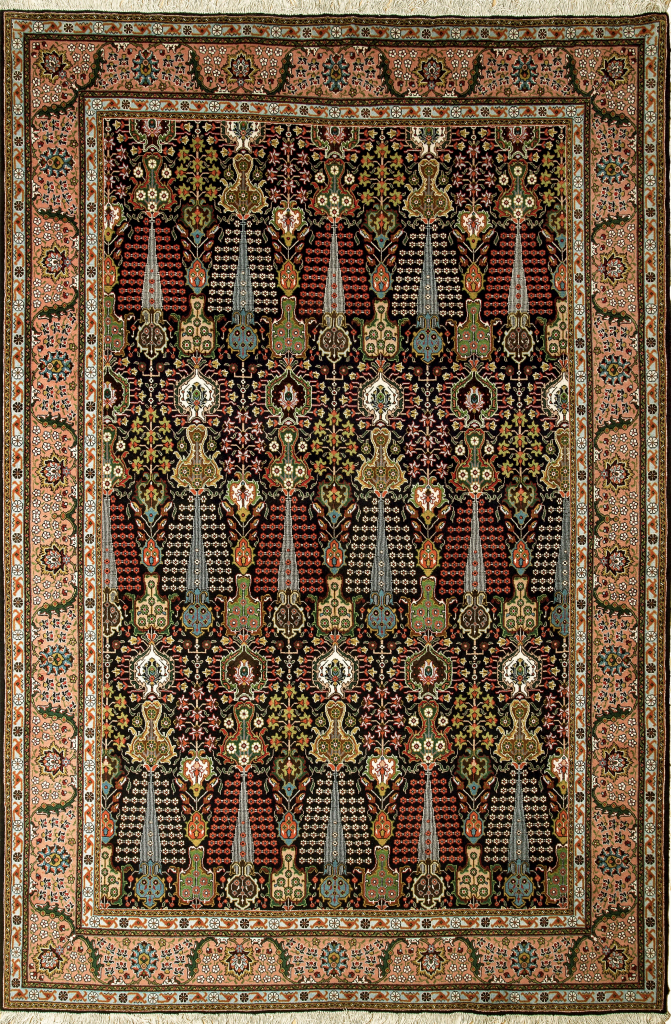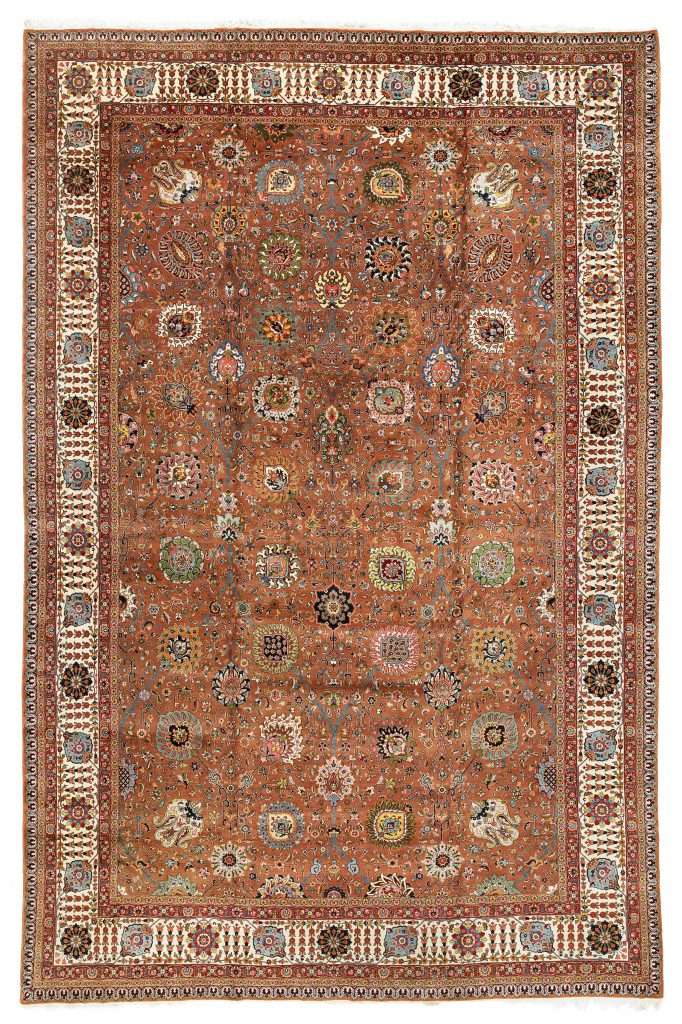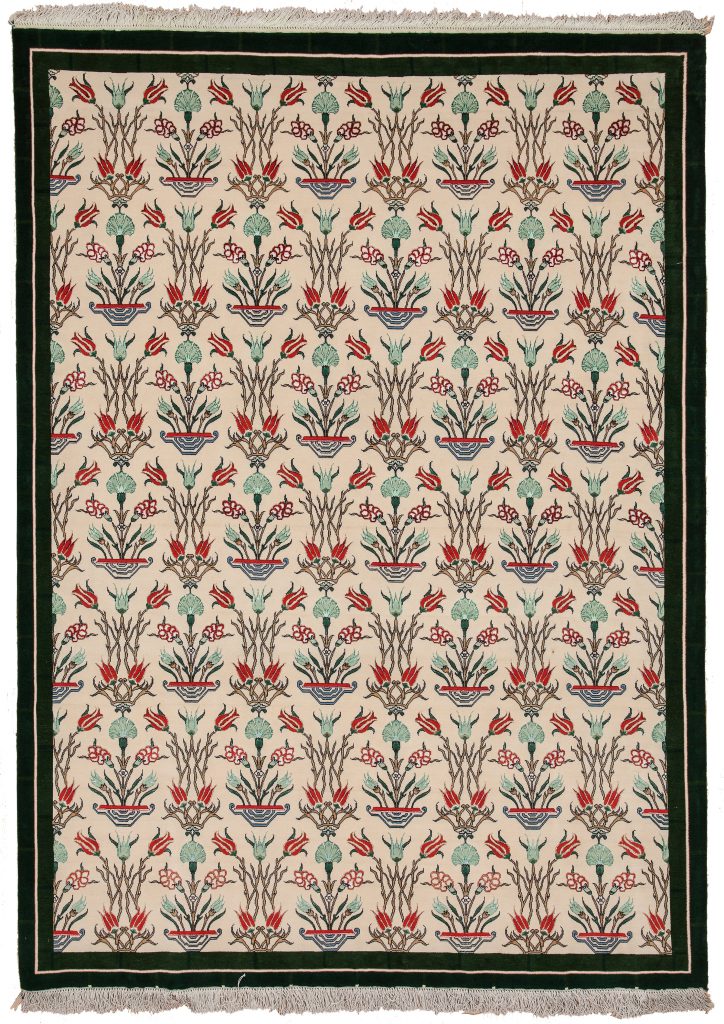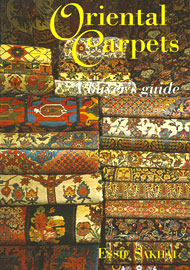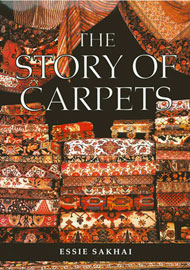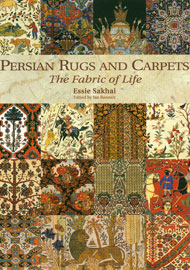Fine Rare Persian Tabriz ‘William Morris’ Design Rug
Rug #819William Morris Persian Tabriz Signed Woven by Special Order Rug Allover design Silk on Silk foundation
A Fine and Rare ‘William Morris’ Design Persian Tabriz Carpet, North West Persia, Silk on Silk Foundation,
Mid 20th Century.
With an ‘Art Nouveau’ carpet inspired design displaying a three tiered lattice, with sinuous meandering vines issuing flower heads and leaves, overlaid with an ochre ogival lattice linking a central emerald green pendant to an ochre central plant stem, in turn overlaid with an aubergine ogival lattice linking a central emerald green pomegranate plant filled medallion to similar half medallions, surrounded by an emerald green border enclosing continuous ochre flower head roundels supported by flowering vines.
This fine and rare Persian silk Tabriz rug is more significant than might first appear. It commands a detailed explanation from the origins of the design, and demonstrates how carpet patterns evolve and reinvent themselves crossing cultural boundaries to create original works of great art which will consequently stand the test of time.
The original basis of the design as presented in this Persian Silk Tabriz rug is seen in the Classical Safavid silk and brocaded metal thread rugs dating to the early 17th Century and entitled ‘Polonaise’, originating from either Isfahan or Kashan during the reign of Shah Abbas 1st, (1587-1629), who was a great Patron of the Arts, and as such carpet production flourished under his patronage. Polonaise rugs epitomised the wealth and opulent taste of the Persian Court at that time. Through ambassadorial and trade routes with the East, many of these exceptionally fine opulent ‘new’ rugs found great favour with the Baroque nobility of 17th Century Europe. The design of Persian Polonaise rugs essentially shows varying design planes of arabesques, strap work, flowering curvilinear vines overlaid with assertive floral forms. This historically important group of recognisable classical rugs attracted the interest of the prominent carpet designers of the Arts and Crafts Movement of the twilight years of the 19th Century heralding a unique episode in British culture, which sparked off a wholesale reaction against the bad design and industrial mass production which is a reaction still present today more than a century later, particularly significant and successful in hand made carpet production.
The prominent and now famous carpet designers of the Arts and Crafts movement were William Morris, and C.F.A Voysey, in England, and Gavin Morton in Donegal, Ireland. In brief, carpet designs were based on varied traditions, including Persian and Anatolian established recognisable designs, of which Morris and Voysey were particularly focussed on. Morris’s finest carpets were made in Hammersmith, London. In the main the original Persian designs were stripped of fine details with the pattern elements remaining as basic forms with the same flow of pattern, drawn in an original ‘Art Nouveau style’ and layered to give depth in the same way as the original Persian principles of pattern format. The result of the ‘Morris’ creations was nothing short of sensational and which had a profound impact in decoration styles into the 20th Century. His interpretations of Persian patterns have a timeless quality, and are established as a significant artistic style and genre in its own right which has its own important status in hand made carpet art. For further information see; Haslam, M. Arts And Crafts Carpets, David Black, 1991.
This remarkable Persian Tabriz rugt displays an understanding of the Arts and Crafts style and presents a new interpretation and development of this design which to a degree reverts back to the original Classical ‘Polonaise’ design. This Tabriz silk rug incorporates a mix of both styles to produce a magnificent highly decorative 20th Century Persian hybrid, epitomised by a mix of Art Nouveau motifs combined with traditional Persian iconography. This exemplified by the the drawing of the scrolling vinery and associated floral elements which are truly Persian in style, enhanced by the flower heads in the main border which similarly revert back to Persian iconography.
The insight of the master weaver is outstanding as this fine silk Tabriz rug stands as a testament to the successful combination of seemingly different styles of presenting a beautiful unique work of woven art.
The colours selected and magnificently juxtaposed are two shades of green, purple, soft caramel, saffron and associated accent tones serve to enhance and support the artistry of the master weaver in the creation of an exceptional work of art. This ingenious work of Tabriz woven art is duly signed by the master weaver.
William Morris Persian Tabriz Signed Woven by Special Order Rug. This piece was handwoven in Tabriz , Iran. For further information please contact us and our team will be pleased to assist you. All pieces in the collection are under the auspices of Essie Sakhai, one of the world’s foremost experts and collectors of fine handmade Persian rugs and carpets.

Delivery
Delivery
Enjoy Complimentary Express Delivery at Checkout
Free express next-day delivery on all UK orders.
Free express delivery on all international orders above £2,000.
Estimated Delivery Times
Please allow between 1-3 days for UK, Europe and United States destinations and 5-7 days for Far East, South America, Middle East destinations.
Please note that orders placed after 12pm (UK time), on the weekend, or during holidays will be processed on the following business day. You will be provided with a shipping tracking number once your order has been shipped.
Collection from our Mayfair London showrooms
In-store collection will be ready within 1 business day. To collect in-store you will be required to show confirmation e-mail, official photo ID (passport or driving license) and the payment card used for the order. If someone else is collecting on your behalf, please make sure they bring a letter of authorisation that permits this person to collect on your behalf, official photo ID of the purchaser and of the person collecting and confirmation e-mail.

Exchanges
Exchanges
Essie Carpets offers clients a lifetime exchange service on any items purchased from us should you wish to change your carpets at any time in the future, subject to the item being in good condition; this can be particularly useful when redecorating your home, or when an upgrade in type or quality is desired.

Payment
Payment
Payments are accepted via credit card or debit card with a valid billing and shipping address*. Accepted credit cards are Visa, American Express, and Mastercard. When placing an order, your billing address must correspond to the address of your credit card, or we will not be able to process your order.
Bank Transfers are also accepted; in order to pay by Bank Transfer, please contact our Client Services via telephone at +44 20 7493 7766 or e-mail at sales@essiecarpets.com.
All transactions are secured. The Essie Carpets website is provided with an SSL encryption system to protect personal and payment data.
Similar Carpets
-
 An Extremely Fine Persian Tabriz Carpet 590 x 395 cm
An Extremely Fine Persian Tabriz Carpet 590 x 395 cmRug #5286 An Extremely Fine Persian Tabriz Carpet POA
An Extremely Fine Persian Tabriz Carpet
-
 Very Fine Persian Tabriz Extra Large Carpet 510 x 342 cm
Very Fine Persian Tabriz Extra Large Carpet 510 x 342 cmRug #5059 Very Fine Persian Tabriz Extra Large Carpet POA
Very Fine Persian Tabriz Extra Large Carpet
-
 Fine Persian Tabriz Carpet 335 x 213 cm
Fine Persian Tabriz Carpet 335 x 213 cmRug #026 Fine Persian Tabriz Carpet POA
Fine Persian Tabriz Carpet
-
 Extremely Fine Persian Tabriz Carpet 600 x 387 cm
Extremely Fine Persian Tabriz Carpet 600 x 387 cmRug #5229 Extremely Fine Persian Tabriz Carpet POA
Extremely Fine Persian Tabriz Carpet
-
 Extremely Fine and Rare Signed Persian Tabriz Rug 250 x 203 cm
Extremely Fine and Rare Signed Persian Tabriz Rug 250 x 203 cmRug #797 Extremely Fine and Rare Signed Persian Tabriz Rug POA
Extremely Fine and Rare Signed Persian Tabriz Rug
-
 Extremely Fine Persian Tabriz Rug 203 x 152 cm
Extremely Fine Persian Tabriz Rug 203 x 152 cmRug #675 Extremely Fine Persian Tabriz Rug POA
Extremely Fine Persian Tabriz Rug
